
WHAT MAKES A PRECIOUS STONE PRECIOUS?
Anything you love is precious.
Like the turquoise ring, your then-boyfriend (now your husband) bought you at a gas station in New Mexico when he asked you to marry him. The stone is cracked now. You wore it in the shower, when you washed the dishes, and even when you slept because you were afraid of losing it. For a long time, you thought that taking it off would break the love-spell. The silver band is thin, scratched, and battered from all of those years on your finger.
It’s more valuable to you than, say, a pink sapphire that you could purchase for yourself, even though the pink sapphire—even a modest one-- will cost far more than the been-there car that carried the two of you through the New Mexico desert all of those years ago.
What makes your gas-station ring precious to you is its romantic story and deep romantic meaning. And there’s no arguing with that subjective value.
And here’s where the definition of “precious” turns from subjective to objective: your turquoise ring isn’t valuable to anyone but you, except maybe someone who knows and loves you.
Why?
Turquoise is not recognized as a precious stone. Although historically beloved from Tibet to Tucson, it is now considered a semi-precious stone, and quite common.
Does this mean you shouldn’t buy it, love it, wear it, cherish it?
Of course not.
Many other stones that you may enjoy, including opal, amethyst, citrine, topaz, and aquamarine, are considered semi-precious.
However, there are stones which are universally, objectively identified as “precious.”
Why?
Simple answer: market value, driven by rarity.
Defining “precious” immediately gets complicated. In the broad sense, whatever you love is precious. Your appreciation of a piece of jewelry, and your emotional relationship with it, gives the piece a subjective kind of value. However, there are objective standards that distinguish precious stones. Changes in the marketplace affect how we define the word “precious.”
UNICORNS FOUND IN NEW JERSEY
For example, even a few decades ago, pearls were usually classed as precious gems. Pearls of antiquity were typically salt-water pearls, harvested in the wild, collected at great human risk and cost from the Gulf of Arabia, the waters surrounding Japan, and other parts of pre-industrial Asia. They were traded along the silk and spice routes for centuries and used in the ornaments of queens, Maharajahs, czars, princes, emperors, kings, Popes and other people who literally wielded the power that shaped the pre-industrial world. Round pearls, in particular, were precious. A uniform shape indicated the consistency of water temperature, which was rare in nature. Bodies of saltwater tend to be larger than freshwater lakes, so the temperature in large bodies of water will usually be more constant. This is why the roundest pearls were generally harvested from the sea, versus rivers and other bodies of freshwater.
By contrast, pearls collected from freshwater mussels and other filtering bivalves in the wild often were lumpy, bumpy and “baroque”, meaning imperfect, because of frequent fluctuations in the water temperature where the mollusks grew. Today, thanks to modern aquaculture or indoor pearl-farming, pearls have lost much of their prestige and status. The massive tanks where the pearl-oysters are now grown are carefully controlled, consistently maintaining steady salinity and temperature, producing millions of perfectly round pearls every year for the jewelry trade.
Round genuine pearls with deep nacre or luster are now common and comparatively inexpensive, although there are certainly exceptions. Aquaculture has flooded (pun intended) the market with lovely pearls which would have been rare indeed even a generation ago. This is a bit like discovering a huge herd of unicorns in New Jersey. Because they are no longer rare, they lose a bit of their mystique.
ENDANGERED AND CONTROVERSIAL
Along similar lines, Mediterranean branch coral and ivory have a complex history, and now are no longer considered commercially “precious.”
Like pearls, both coral and ivory are organic in origin, meaning that they are derived from animals.
In the case of pearls and ivory, live animals (endangered in the case of elephants and, less commonly, walruses and whales) are killed specifically to obtain the gem, and this practice creates tremendous ethical controversy.
In the case of coral, the world’s reefs are now endangered, and the red Mediterranean coral familiar to collectors for centuries is literally no longer produced in our planet’s oceans. The corals which produced generations of red corals are no longer living.
Like mineral gemstones, coral requires centuries to form, and so this substance, long believed to protect the wearer from harm, has fallen out of favor.
CZAR’S FICKLE FAVORITES
Another example of context creating value is amber, which is preserved fossil-resin of ancient trees.
Amber, like coral and ivory, has often been endowed with mystical or supernatural powers. In some parts of the world, including the Baltic countries and Scandinavia, amber is traditionally believed to have a soothing effect when placed in contact with the skin, so amber beads are often given to teething infants to suckle and chew to relieve the pain of emerging baby-teeth.
The science to support this claim is thin, but it’s an example of how a belief-system creates value. For centuries, the amber that washed up on beaches of Eastern Europe was claimed by prevailing religious leaders as the property of the church fathers.
Individuals were prohibited from collecting and keeping amber nuggets and fragments that were released by submerged forests, and anyone doing so would be fined or imprisoned. The Czars of Russia literally paneled rooms with veneers of the honey-colored preserved resin.
During World War II, Nazis dismantled and ransacked the amber rooms of the Czars, and those treasures have never been recovered.
THE COLOR OF MONEY
Another example from the palaces of the Russian Czars illustrating how perceived scarcity and context create value is the deep green-banded stone called malachite. For centuries, this stone, registering a soft 3.5 to 4 on Mohs scale, was rare in the then-known world. The stone often forms in concentric circles resembling “eyes”, and so in ancient Egypt, brilliant green malachite was ground into a powder and worn as eye-makeup to protect the wearer from what would loosely be called “bad vibes”, or the evil eye.
In more recent times, malachite was mined in the nearly inaccessible Ural Mountains, a rugged chain of peaks running north and south through Western Russia. Blocks weighing 20 tons were extracted from the Czar’s quarries.
In the late1830s, architect Alexander Briullov used mosaics of malachite to appoint the Malachite Room of the Winter Palace of St. Petersburg, a huge hall larger than a modern basketball court, for Empress Alexandra Fyodorovna, wife of Nicholas I.
Fantastically-banded Russian malachite veneers also covered cathedral columns, fireplace mantles, huge vases, table and desktops, and 10 foot-high doors as far away as Chapultepec Palace in Mexico City, Mexico.
When malachite was discovered in 1910 in the Democratic Republic of Congo, known as Zaire, the value of the stone plummeted.
Since then, modern mining methods have uncovered deposits of malachite in many other locations. Today, the striped stone, though indisputably beautiful, is now fairly common and often set in affordable sterling silver jewelry.
STONE OF HEAVEN
An anomaly in the discussion of precious and semi-precious stones is jade.
There are several types of jade, ranging between 6 to 7 on the Mohs scale, establishing the stone as relatively soft. However, although jade is prone to scratching, it’s resistant to chipping and breaking, and will not shatter easily. This illustrates an important distinction made by gemologists between “hard” and “tough.” Diamonds are the hardest of minerals, but they also are brittle, meaning that they are not resilient, or structurally tough. Not all jade is green – white, delicate lilac and yellow tones all fall within the jade spectrum.
Imperial jade may command a market-value similar to that of a same-carat diamond, but the reason may surprise you: it’s cultural. Technically, jade falls into the semi-precious category, like amber, ivory, coral, and malachite.
But the history of jade is so highly esteemed in Asia and—surprisingly, perhaps, among New Zealand’s Maori people, as well as among the pre-Conquest MesoAmerican dynasties of the Olmec and Maya – that choice pieces of jade can bear a price-tag in the league of the four stones commonly identified as “precious”: Diamond, Ruby, Emerald, and Sapphire.
Jade has a millennia-old history of ceremonial status, especially in China and Korea, where it is often said that jade was created by thunder and the heavens.
So the meaning of “precious” will always carry some element of context.
WHAT TO WEAR
You may have a special love for a strand of pearls that belonged to your mother.
Nothing can make these less precious to you.
And you don’t even need to be a hard-line purist.
A century ago, the iconic and irreverent Coco Chanel changed the way the world looked at jewelry by unapologetically mixing diamonds with huge rhinestones, and ropes of genuine pearls with fakes.
Today, legendary tastemaker Iris Apfel does the same, pairing outrageous costume pieces and semi-precious stones set in silver with precious gems in eclectic combinations that are garish to some, fabulous to many.
Like Coco and Iris, wear what you love, and whatever brings you joy.
If you’re interested in a precious gem that will appreciate in value, regardless of fashion trends, our professional recommendation: wear something precious now.
We’re passionate about color, and you may be surprised at the mouthwatering sherbet tones and candy-colors of our finest gems.
Because we don’t see the world in black-and-white.
We’d love to consult with you in your search for the perfect gemstone. Contact us at info@heritagegemsandjewels.com or call us at +213.675.7766

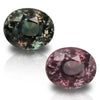 Alexandrite
Alexandrite Amethyst
Amethyst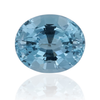 Aquamarine
Aquamarine Chrysoberyl
Chrysoberyl Demantoid
Demantoid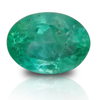 Emerald
Emerald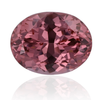 Garnet
Garnet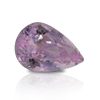 Kunzite
Kunzite Paraiba
Paraiba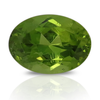 Peridot
Peridot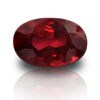 Ruby
Ruby Sapphire
Sapphire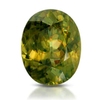 Sphene
Sphene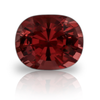 Spinel
Spinel Tanzanite
Tanzanite Topaz
Topaz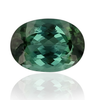 Tourmaline
Tourmaline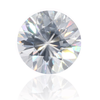 Zircon
Zircon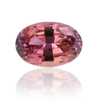 Zoisite
Zoisite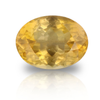 Rare Gemstones
Rare Gemstones Heart Shape
Heart Shape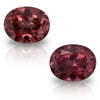 Matched Duo
Matched Duo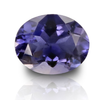 Everyday Candy
Everyday Candy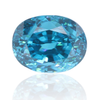 Insta Therapy
Insta Therapy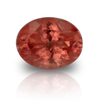 Mini-Splurge
Mini-Splurge